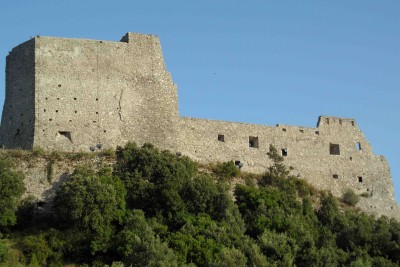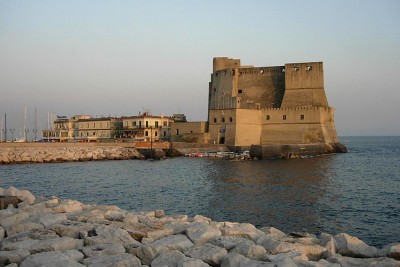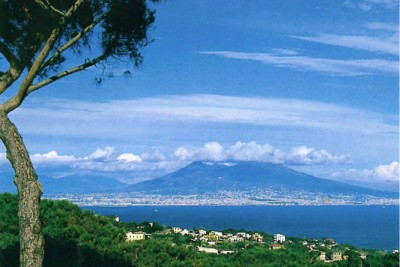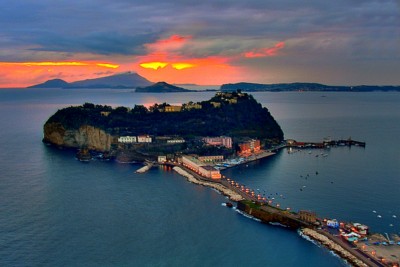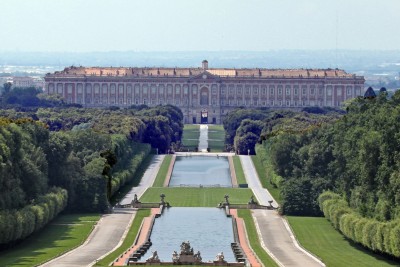The Certosa di Padula, a Monastery in Baroque Style
Dedicated to Saint Lawrence and located in Cilento National Park, it is the largest charterhouse in Italy




The Certosa di Padula, founded by Tommaso di San Severino in 1306 on the site of an earlier monastery, is a Carthusian monastery, or charterhouse, located in the town of Padula, in the Cilento National Park.
Dedicated to Saint Lawrence, it is the biggest charterhouse in Italy. Its main section occupies a surface area of 554,341 ft² with 320 rooms and halls. Its building history covers 450 years, but the principal parts of the buildings are in Baroque style. The monastery has the biggest cloister in the world, which covers 12,000 m² (almost 3 acres) and is surrounded by 84 columns.
According to the strict Carthusian distinction between contemplation and work, there were two distinct places for these practices.

On the one hand the peaceful cloisters, the library with its fine Vietri ceramic tiled floor and the chapels decorated with fine inlaid marble works (the altar frontals in most of the chapels are inlaid, not with marble but with some of the most spectacular 18th century scagliola work ever created).
On the other hand the large kitchen, the cellars with their enormous wine vats, the laundries, and the huge external yards, where there were people working in the stables, ovens, stores, and at the olive oil mill. Its plan mirrors the religious life of the Carthusian order in terms of architectural spaces too.
The charterhouse is subdivided into two large areas: the ‘lower house’, which was in greater contact with the outside world and where activities for the maintenance of the Carthusian community were carried out (spicery, stables, granaries and storehouses located in the external courtyard) and the ‘upper house’ with spaces for the monks’ communal life (church, kitchen, refectory, treasury and chapterhouse) and the strictly secluded rooms organized around the large cloister (monks’ cells and gardens, prior’s apartment, library).

The church contains altars with refined polychrome decorations in scagliola with mother of pearl inlay, frescoes from the 16th and the 18th centuries, an 18th century maiolica floor, and early 16th century engraved and inlaid wooden choirs.
In addition there were the great cellars full of enormous barrels, the laundries and the neighboring fields where the fruits of the earth were cultivated for the sustenance of the monks, as well as for marketing to the outside world. The brothers produced wine, olive oil, fruit and vegetables.
The most atmospheric space is the arcade housing the cells of the Carthusians, each of which contains three or four rooms. It is also possible to see the small window through which food was passed and an opening in the wall for candle light to shine through.

Another striking feature is the spectacular spiral staircase in white marble that leads to the monks’ promenade, to the great cloister and to the area where the Prior had his apartment and his garden, whose wooden arcade is decorated with frescoes of landscapes dating back to the late 17th century.
The Certosa houses the archaeological museum of Western Lucania, which preserves what was unearthed in the excavations at the necropolis of Sala Consilina and Padula, from a period of time ranging from prehistory to the Hellenistic Age.
Viale Certosa Padula (SA)
Open: Monday to Sunday 9.00 AM- 7.00 PM
Closed on Tuesday
Tel: (+39) 0975 777445, or 0975 77552
Tickets Full price: €4.00
EU citizens between 18 and 25: €2.00
With ArteCard: € 2.00
EU citizens under 18 or over 65: Free
Directions by car:
Take the Autostrada Salerno – Reggio Calabria and the Padula-Buonabitacolo exit, then follow signs for Padula.
WE SUGGEST THIS VIDEO ON THE CERTOSA DI PADULA

